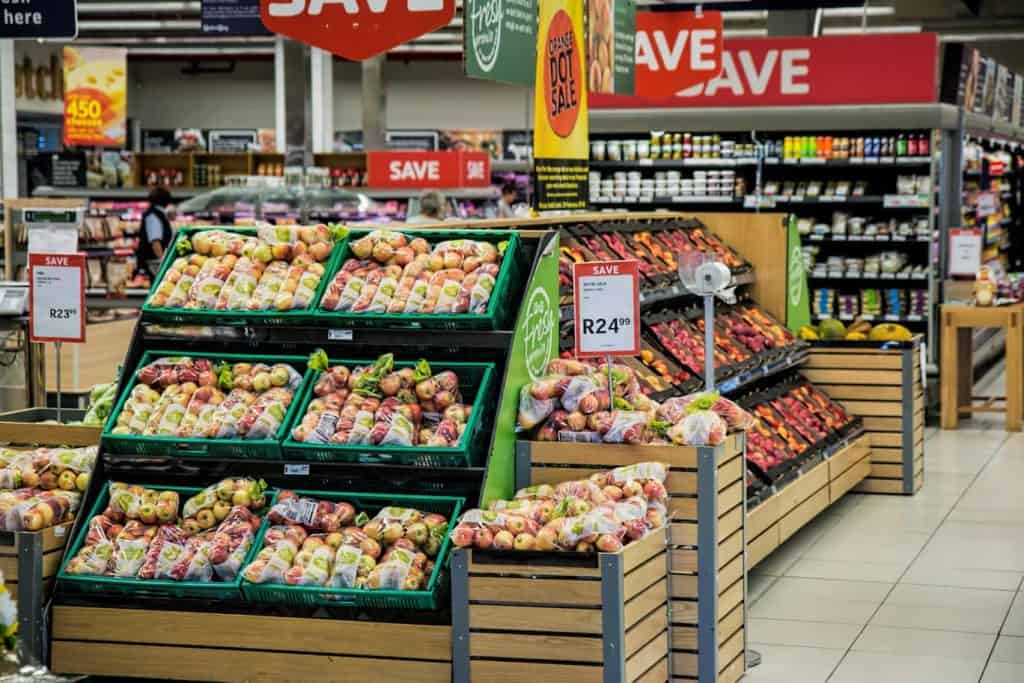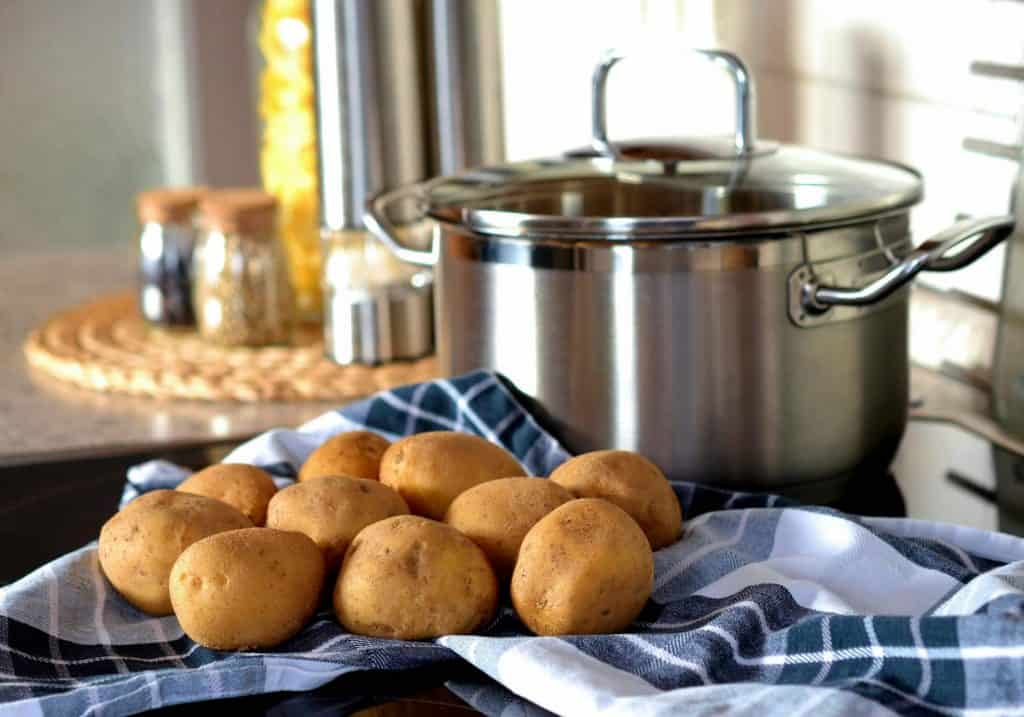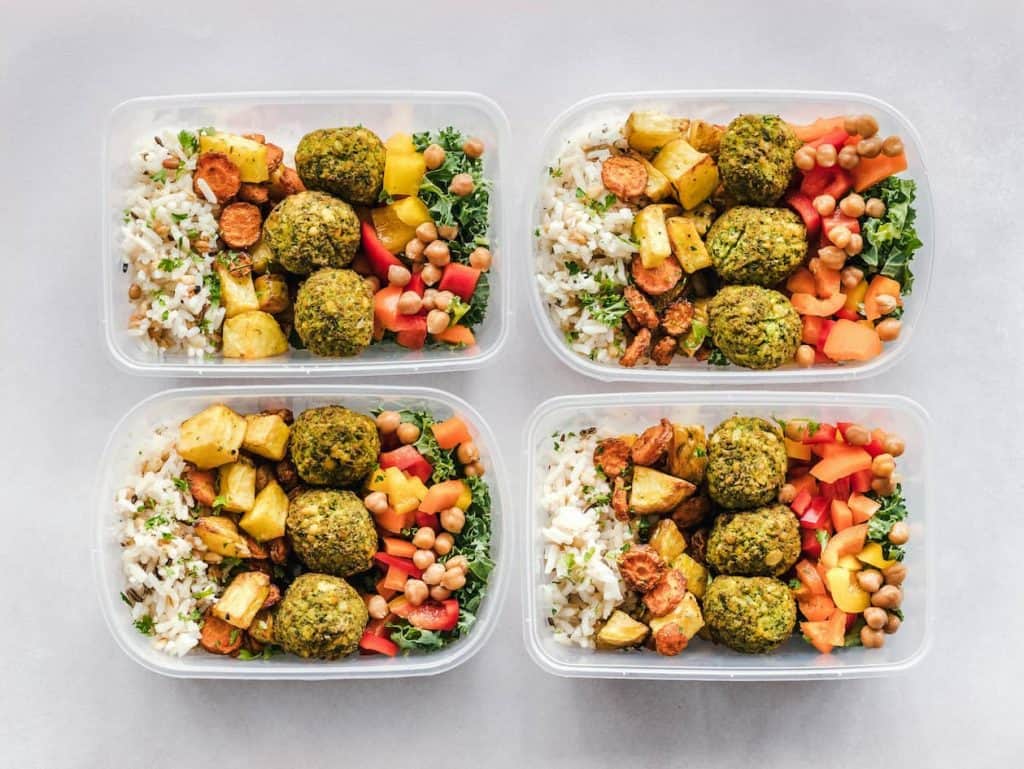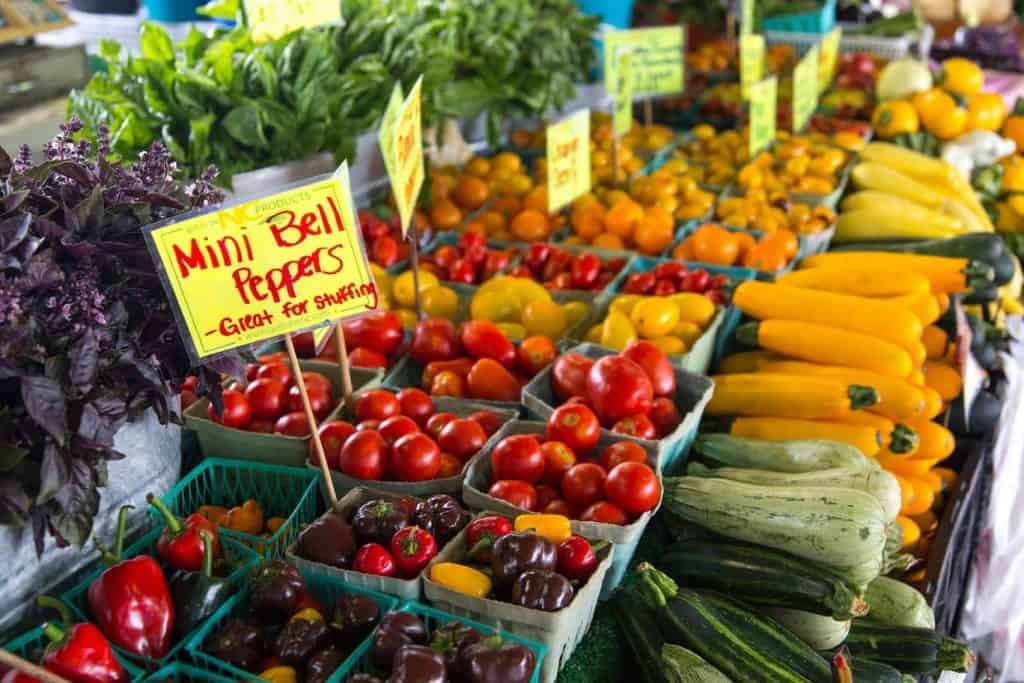10 Easy Ways to Save Money on Food and Groceries

Grocery prices have drastically gone up in the last few years making making food one of our biggest expenses. Restaurant meals and take-out are also very expensive which makes it even more difficult to save money on food. However, with some small changes and intentionality, you can significantly cut down on your grocery bill and help your family eat more nutritious food. Here are 10 simple money-saving tips that will help you reduce and stick to your food budget.
1. Start Meal Planning

Nothing is more annoying than trying to figure out what to make for dinner when you’re exhausted from work, and the kids are starving. This often leads to impulse fast-food buys which can be costly, especially nowadays. Not having a plan also leads to increased food waste. I can’t even count how many times I’ve bought a ton of groceries, only to end up throwing half of them out because I didn’t use them in time. Such a waste of money.
Meal planning is the key to breaking this cycle. Pick one day (like Sundays) to plan out your meals for the week. Some people like to plan out breakfast, lunch, and dinner. If that sounds overwhelming, try just planning out dinners.
The first thing you want to do is take inventory of what you already have and try to build from that. Your plan doesn’t have to be elaborate, and you don’t need to cook an entire meal from scratch each night. You can plan for something as simple as a sandwich or leftovers. Be careful not to set yourself up for failure. Make sure you are realistic with yourself about how much time you have to cook and prepare meals.
I think it’s helpful to make a list of your family’s favorite meals that you can refer to. This way you don’t have to use quite as much brain power when doing your planning. It is also a good idea to make a list of some super quick meals you can make on busy nights when you have less time than usual.
Some people like to have a theme for each night of the week (such as Meatless Monday or Taco Tuesday) which is another way to make it easier to plan meals. Remember to be flexible. Your meal plan isn’t set in stone. If something comes up, you can always rearrange your plan.
2. Stick to Your Shopping List

Create your grocery list based on your meal plan and whatever other essentials you need for the week. Make sure not to put items on your list that you already have on hand. Be sure to stick to what you have on your list once you get to the store.
It’s so easy to add a few random items into the cart, but this quickly leads to overspending. A trick I use to avoid impulse purchases is doing my grocery shopping online and picking it up. Not only does this prevent me from buying unnecessary items, it saves me a ton of time (which is something I think we could all use more of).
3. Cook Large Batches to Freeze and Eat Leftovers
Making a big pot of soup and then freezing half of it for a later date is a great way to save time and money. You can also plan to have leftovers as your meal for the following day or freeze any extra portions for a quick meal in the future.
Another option is to get creative and turn the leftovers into a completely different meal the following day. For instance, if you have leftover rice from the night before you can turn it into fried rice the next day. It’s also helpful to freeze certain chopped vegetables for future recipes or even bananas that are getting ripe to use in smoothies.
4. Use Budget-Friendly Ingredients

Another great way to lower your grocery expenses and save money on food is to focus on using budget-friendly ingredients. Base your meals around affordable staples like rice, beans, pasta, lentils, eggs, and potatoes. These ingredients also happen to be very versatile, so you’ll be able to create a wide variety of meals which will help keep your family from getting sick of them.
5. Limit Processed and Packaged Foods

Processed foods aren’t only bad for your health, they are bad for your wallet. While convenience is important, packaged meals and snacks are usually more expensive than homemade meals and snacks. Sometimes however, a quick, processed meal might be just what your family (or your sanity) needs. That is okay. Moderation is the key. The more you’re able to limit these types of foods though, the more money you will save in the long run.
6. Shop Sales and Use Coupons Wisely
Another easy tip to save money on food is to check out the flyer for the local grocery store to see which items are on sale. Plan some of your meals around these items. There are also coupon apps like Ibotta or Rakuten you can use to save a little money. Most grocery stores also have loyalty programs which allows you to get some extra discounts as well.
7. Shop at Bulk or Discount Stores
Shopping at discount stores is pretty much a guaranteed way to save money on food. My favorite store is Aldi. It is filled with inexpensive, quality food including a lot of organic choices.
Buying in bulk can also save you money. It’s not always a better deal though so be sure to check the unit price. This is usually found in smaller print underneath the actual price. You also want to make sure you’ll be able to use whatever you’re buying in bulk before the expiration date. I’ve made the mistake before of buying perishable items in bulk and ended up wasting more money than I saved.
8. Pack Your Own Lunches and Snacks for Work and School

This well-known tip is a definite money saver. Simple options like sandwiches, wraps, or salads are far cheaper than takeout. You can also pack leftovers from the night before.
Meal prepping has gotten popular (especially for breakfasts and lunches) which is when you cook and prep a bunch of food one day (like Sunday) to be used throughout the week. Some examples of food you could prep include hard-boiled eggs, baked chicken, cut up fruits and vegetables, egg muffins, homemade protein balls, etc.)
9. Buy Generic or Store Brands
Generic and store brands are typically sold at lower prices. Usually, they are just as good as the more expensive name brands, sometimes even better. Obviously, you will run into exceptions from time to time.
If you really don’t like the generic brand, don’t force yourself to eat it. Most of the time though, you probably won’t even notice a difference. These brands are usually placed on the lower shelves in the grocery store underneath the most expensive items which are placed at eye level.
10. Use What is in Season

Buying fresh fruit and veggies that are in season is one of the best ways to save money on produce. Make a list of when different produce your family likes are in season and take that into consideration when creating your meal plans. You can find some great deals on fresh produce at local farmer’s markets.
Do you have any tips to save money on food that I didn’t list? I would love to hear them. Please let me know in the comments!






